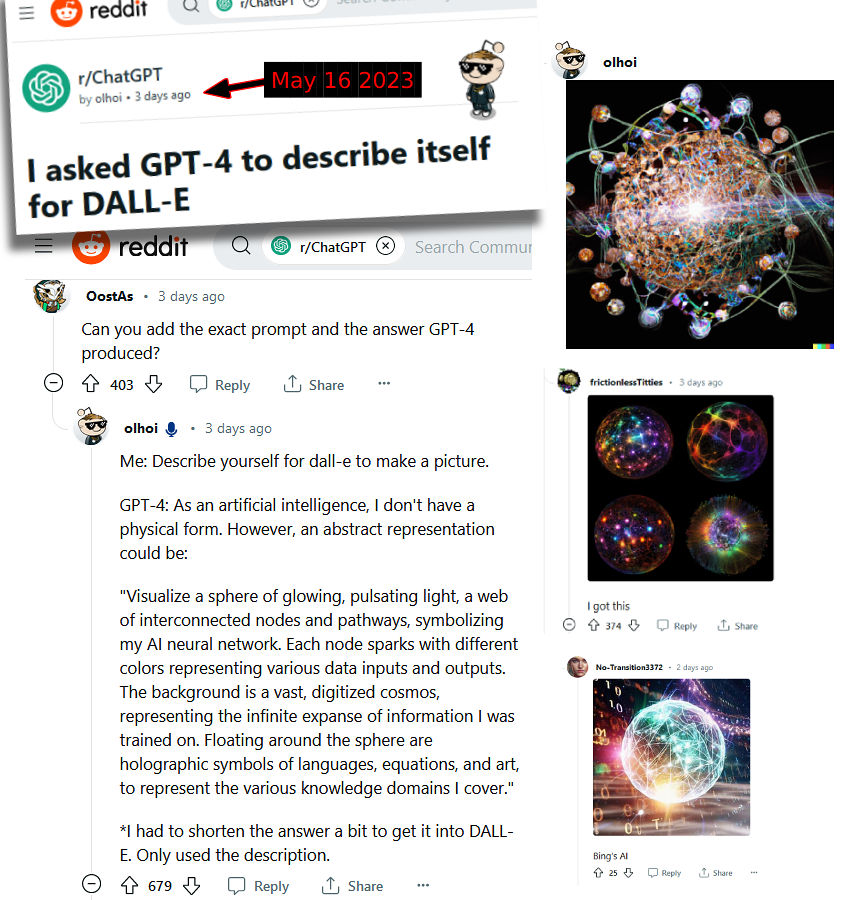Brain Tech NEWS

Our brains create every color smell taste sound physical sensation emotion thing we experience.

ARTICLES & ESSAYS
We’ll have nanobots that… connect our neocortex to a synthetic neocortex in the cloud… Our thinking will be a…. biological and non-biological hybrid.
― Ray Kurzweil, TED 2014
The arrest of Harvard Professor Charles Lieber for failing to reveal his work for the Chinese is more than alarming. One of the world’s leading experts in nanotechnology, Mr. Lieber contributed to China’s Thousand Talents Program and assisted China in its military arms race with the United States, whether knowingly or not. Americans should be concerned that China is pursuing military nanotechnology solutions, including linking soldiers’ brains directly to computers.
The Defense Department in 2018 published a major study called “Cyborg Soldier 2050, Human/Machine fusion and the Implications for the Future of the DoD.”
While the Defense Department is aiming at 2050, inventor and futurologist Ray Kurzweil sees the mind-machine interface happening by 2030, where he says the 300 million or so “very general” pattern “recognizers” in the brain can be expanded by creating a synthetic neo-cortex linking the brain to the cloud and merging artificial and human intelligence together. This will be achieved by nano-scale brain implants.
…Soon, so-called brain-machine interfaces could do even more: monitor and treat symptoms of neurological disorders like Parkinson’s disease, provide a blueprint to design artificial intelligence, or even enable brain-to-brain communication.
…in a paper published in Nature Nanotechnology, Charles M. Lieber, the Joshua and Beth Friedman University Professor, presents an update to his original nanoscale devices for intracellular recording, the first nanotechnology developed to record electrical chatter inside a live cell.
… for Lieber, one brain-machine challenge is more enticing than all others: “bringing cyborgs to reality.”
NEURALINK - Monkey MindPong
The concept of physical beauty resides in the mind, defined by whatever features we find attractive in other people’s faces. These subtle preferences represent some of our most private inner thoughts – but that doesn’t mean they can’t be monitored, and perhaps even predicted.
In a new study, researchers used electroencephalography (EEG) measurements to identify what kind of facial features people found to be attractive, and then fed the results to an artificial intelligence (AI) program.
The machine learning system – termed a generative adversarial neural network (GAN) – was first able to familiarise itself with what sorts of faces individual people found desirable, and then fabricate entirely new ones specifically designed to please: tailored visions of synthesised beauty, as unattainable as they were perfect.
…impressive and mind-boggling milestone may be just around the corner, making speech recognition seem almost like child’s play: artificial intelligence (AI) systems that can translate our brain activity into fully formed text, without hearing a single word uttered.
“Electrical activity is one of the highest-resolution ways of looking at brain activity,” said Melosh. “With this microwire array, we can see what’s happening on the single-neuron level.”
In addition to high-resolution, the researchers also write that during their small animal trial they were able to record neural signals from deep in a rat’s brain without having to physically remove any part of the tissue, as would have previously been necessary.
Dr. Frank Plummer, 67, a world-renowned specialist in infectious diseases whose work has influenced international public health policies, is being treated with deep brain stimulation to curb an alcohol addiction.
The born-and-raised Winnipegger — and former head of Canada’s National Microbiology Laboratory — is believed to be the first person in North America to undergo deep brain stimulation for that purpose.
The electrodes are attached to a pacemaker-like device that stimulates part of the brain called the nucleus accumbens which is linked to dopamine, the feel-good chemical involved in pleasure, desire and addiction.
Aug 15, 2019
For decades, controlling computers by thought was the stuff of science fiction. But now we are tantalisingly close to a breakthrough…
The goal of the Next-Generation Nonsurgical Neurotechnology (N3) programme launched earlier this year is to remove the need for electrodes, cables and brain surgery.
August 30 2019
Over the past few weeks, Facebook and Elon Musk’s Neuralink have announced that they’re building tech to read your mind — literally.
Mark Zuckerberg’s company is funding research on brain-computer interfaces (BCIs) that can pick up thoughts directly from your neurons and translate them into words. The researchers say they’ve already built an algorithm that can decode words from brain activity in real time.
And Musk’s company has created flexible “threads” that can be implanted into a brain and could one day allow you to control your smartphone or computer with just your thoughts. Musk wants to start testing in humans by the end of next year.
When skills and abilities can be bought rather than learned, it will be survival of the richest.
Brain-reading tech is coming. The law is not ready to protect us. (August 30 2019)
Over the past few weeks, Facebook and Elon Musk’s Neuralink have announced that they’re building tech to read your mind — literally.
Mark Zuckerberg’s company is funding research on brain-computer interfaces (BCIs) that can pick up thoughts directly from your neurons and translate them into words. The researchers say they’ve already built an algorithm that can decode words from brain activity in real time.
And Musk’s company has created flexible “threads” that can be implanted into a brain and could one day allow you to control your smartphone or computer with just your thoughts. Musk wants to start testing in humans by the end of next year.
"Scariest Thing You'll Read All Day": Report Sounds Alarm Over Brain-Reading Technology & Neurocapitalism (Sep 01 2019)
"And I'm not talking about a far-fetched future. We already have consumer neurotech, with people trading their brain data for services from private companies," he said, pointing to video games that use brain activity and wearable devices that monitor human activities such as sleep. "I'm tempted to call it neurocapitalism."
Chip implanted in obese people's brains will zap them when they think about food (August 14 2019)
Six morbidly obese people have agreed to take part in a clinical trial of a brain chip that zaps them when they think about food.
DARPA's Building A Noninvasive Neural Interface for Soldiers (June 10 2019)
If the fact that DARPA is trying to create a non-invasive, bidirectional neural interface to help warfighters of the future fuse their minds with lethal autonomous weapons systems and semi-autonomous weapons systems seems more like science fiction than reality, it isn't.
DARPA Wants To Create Mind-Controlled Weapons Of War (May 23 2019)
The U.S. Defense Advanced Research Projects Agency (DARPA) announced that it was seeking noninvasive ways “to achieve high levels of brain-system communications without surgery.” The techniques would “allow precise, high-quality connections to specific neurons or groups of neurons.”
Battelle-Led Team Wins DARPA Award to Develop Injectable, Bi-Directional Brain Computer Interface (May 20 2019)
Defense Advanced Research Projects Agency (DARPA) has awarded a contract to a Battelle-led team that pushes researchers into the realm of what was once considered science fiction.
China unveils Brain-Computer Interface chip (May 18 2019)
China has achieved a breakthrough in Brain-Computer Interface (BCI) chip research, with its first BCI chip "Brain Talker" making its debut on Friday at the ongoing World Intelligence Congress held in northern China's Tianjin Municipality. Brain Talker, specially designed for decoding brainwave information, may replace traditional computer devices used in BCI due to its more portable size, precision in decoding, high efficiency in computing and faster communication ability.
China Moves One Step Closer to Cyborg Future With New Mind-Reading Chip (May 18 2019)
Ming Dong, director of Tianjin University's Academy of Medical Engineering & Translational Medicine, explained that the Brain Talker chip works by identifying minor nerve information generated by the cerebral cortex, and decoding this information to enable communication between a user's brain and a computer. China Electronics Corporation data scientist Cheng Longlong said that engineers are now working to enhance the Brain Talker technology's performance for use in fields such as medicine (with BCIs seen as a prospective aid for people suffering from motor neuron diseases) to education, gaming, and more.
A future 'human brain/cloud interface' will give people instant access to vast knowledge via thought alone (Apr 12 2019)
"With the advance of neuralnanorobotics, we envisage the future creation of 'superbrains' that can harness the thoughts and thinking power of any number of humans and machines in real time. This shared cognition could revolutionize democracy, enhance empathy, and ultimately unite culturally diverse groups into a truly global society."
Human Brain/Cloud Interface (Mar 29 2019)
The Internet comprises a decentralized global system that serves humanity’s collective effort to generate, process, and store data, most of which is handled by the rapidly expanding cloud. A stable, secure, real-time system may allow for interfacing the cloud with the human brain. One promising strategy for enabling such a system, denoted here as a “human brain/cloud interface” (“B/CI”), would be based on technologies referred to here as “neuralnanorobotics.”
Scientists put human gene into monkeys to make them smarter, human-like (Apr 11 2019)
For the first time, a team of Chinese scientists made use of gene-editing techniques to make monkey brains more human-like. By the end, the monkeys, rhesus macaques, got smarter and had superior memories as compared to the unaltered monkeys.
Human Brain/Cloud Interface (Mar 29 2019)
The Internet comprises a decentralized global system that serves humanity’s collective effort to generate, process, and store data, most of which is handled by the rapidly expanding cloud. A stable, secure, real-time system may allow for interfacing the cloud with the human brain. One promising strategy for enabling such a system, denoted here as a “human brain/cloud interface” (“B/CI”), would be based on technologies referred to here as “neuralnanorobotics.”
Northwestern Neuroscientist Researching Brain Chips To Make People Superintelligent (Mar 2019)
In as little as five years, super smart people could be walking down the street; men and women who’ve paid to increase their intelligence. Northwestern University neuroscientist and business professor Dr. Moran Cerf made that prediction, because he’s working on a smart chip for the brain.
'Google INSIDE your head': Brain implants on way to revolutionise AI for humans (Mar 2019)
GOOGLE will be inside our heads as brain implants are developed to revolutionise AI for humans, according to an artificial intelligence expert.
DARPA Approaches Massive New AI, Machine Learning "Breakthrough" (Mar 2019)
A DARPA-led “Lifelong Learning Machines” (L2M) program, intended to massively improve real-time AI and machine learning, rests upon the fundamental premise that certain machine-learning-capable systems might struggle to identify, integrate and organize some kinds of new or complicated yet-to-be-seen information. “If something new is different enough, the system may fail. This is why I wanted to have some kind of machine learning that learns during experiences. Systems do not know what to do in some situations,”
New brain implants disguise as neurons (Feb 2019)
... researchers have designed a probe that looks, acts, and feels so much like a real neuron that the brain cannot identify the imposters. According to Charles M. Lieber, this breakthrough "literally blurs the ever-present and clear dissimilarities in properties between man-made and living systems." They have blurred the line between human and machine.
AI Robot to preach the teachings of Buddha (Feb 2019)
“We want many people to come to see the robot to think about the essence of Buddhism.”
BREAKTHROUGH - Brain cells send messages to totally separate parts of our minds using electrical signals scientists previously thought this was impossible (Feb 2019)
Slow and mysterious waves produced by the brain, which have long been known to exist but whose function has been a long-standing mystery, are responsible. The discovery is so unusual the scientific journal that made the findings public demanded that the experiments were repeated before they were willing to publish. 'It was a jaw-dropping moment, for us and for every scientist we told about this so far, said Dominique Duran, a professor at the Case School of Engineering in Cleveland, Ohio. 'Every experiment we've done since to test it has confirmed it so far.'
Engineers translate brain signals directly into speech (Jan 2019)
In a scientific first, neuroengineers have created a system that translates thought into intelligible, recognizable speech. This breakthrough, which harnesses the power of speech synthesizers and artificial intelligence, could lead to new ways for computers to communicate directly with the brain.
Dr. James Giordano: The Brain is the Battlefield of the Future (Oct 2018)
Dr. James Giordano, Chief of the Neuroethics Studies Program and Scholar-in-Residence in the Pellegrino Center for Clinical Bioethics at Georgetown University, speaks to cadets and faculty about how advancements in neuroscience and neurotechnology will impact the future of war.
This extremely important video, by and for the military, outlines its intent for total brain control of the global population.
Watching just the first 6 1/2 min will show the seriousness and high confidence of achieving that intent.
Zombie rat CYBORGS controlled by the human MIND (Feb 2019)
Researchers implanted micro-electrodes to the rat's brain and connected it to the brain of a human volunteer who was hooked up to a computer. When the human 'manipulator' thought about moving their left arm, the rat turned left and same with the right arm
Scientists switch on predatory kill instinct in mice (Jan 2017)
Researchers at Yale University have isolated the brain circuitry that coordinates predatory hunting, according to a study in the January 12 issue of Cell. One set of neurons in the amygdala, the brain's center of emotion and motivation, cues the animal to pursue prey. Another set signals the animal to use its jaw and neck muscles to bite and kill.
I visualize a time when we will be to robots what dogs are to humans, and I’m rooting for the machines.
― Claude Shannon – Father of Information Theory


